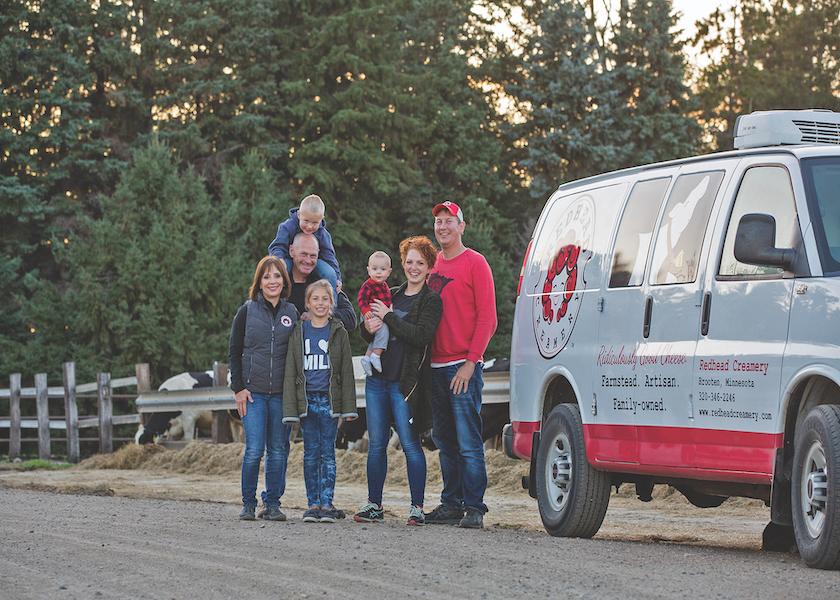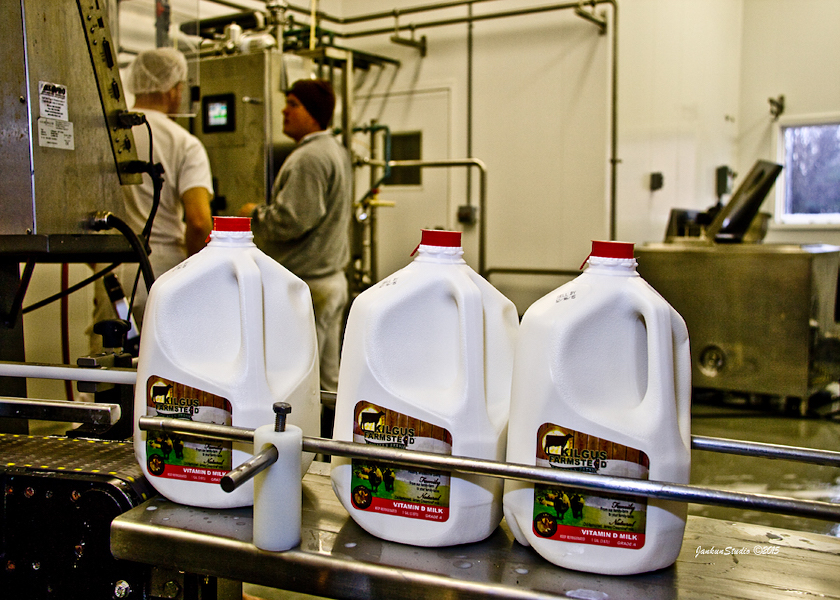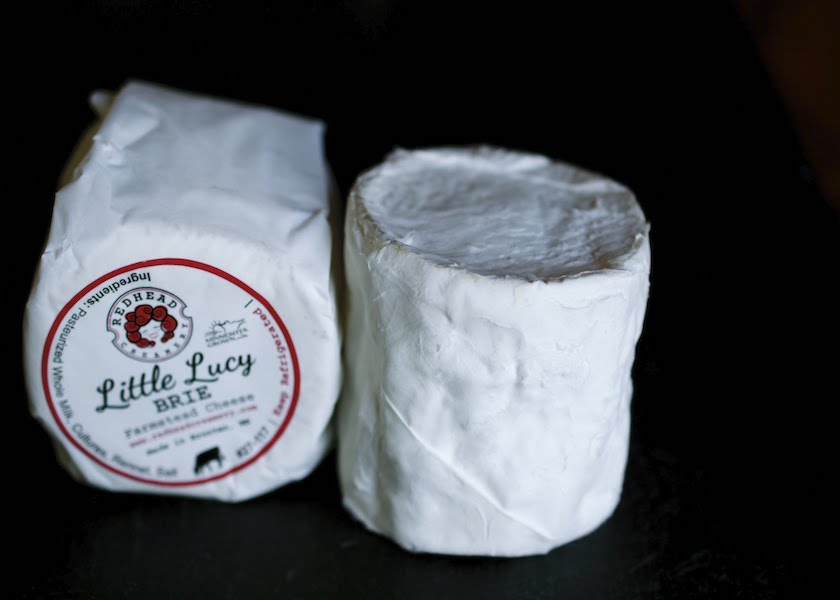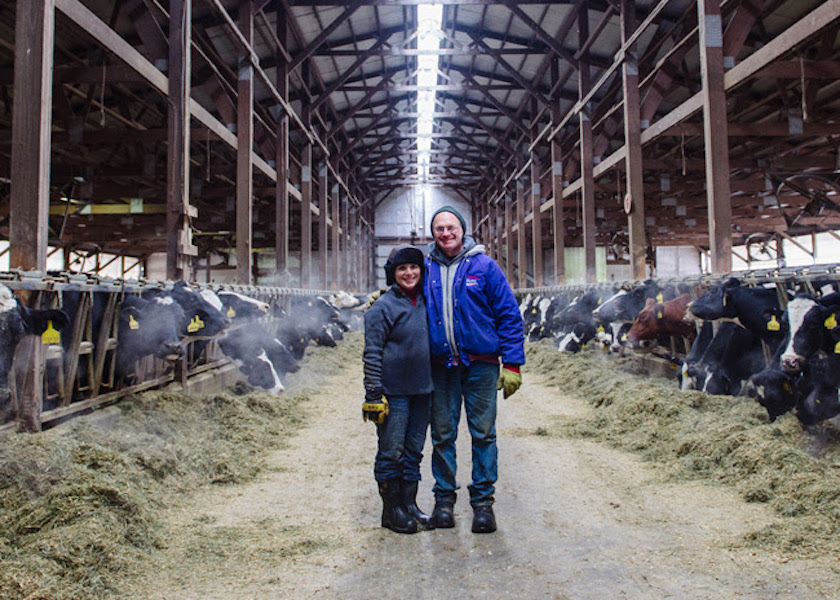Expanding Income Opportunities without Expanding the Dairy

With ever-fluctuating milk prices, dairy farmers are continually re-evaluating the future of the farm. Pandemic times have added to an endless list of hurdles when it comes to adding cows and expanding in order to grow the business. With that, many dairies are looking towards other options to increase cash flow and create room for more family members on the farm.
Matt Kilgus of Kilgus Farmstead and Alise Sjostrom of Redhead Creamery share the trials and triumphs they’ve worked through to grow their businesses and expand their income opportunities. Kilgus Farmstead, located in Fairbury, IL, sells bottled milk from their 150-head Jersey herd, as well as a variety of meats raised on the farm. Redhead Creamery produces farmstead artisan cheeses in Brooten, MN, using milk from Jer-Lindy Farms, the family dairy.
Where to Begin

Many dairies aspire to achieve their goals for cash flow and family involvement by marketing and selling their own value-added products. But faced with up-front hurdles such as permits, hefty capital investments, marketing logistics and big risks, many of these dreams fizzle out before they even begin. Kilgus and Sjostrom give the same advice for getting started: learn as much as you can from others who are already doing it, and do your research on the programs that are out there to help.
The Kilgus family chose bottled milk as opposed to farmstead cheeses based on market needs in their area. Once the family knew their “what,” they set off on tours to dozens of farms around the Midwest to learn the “how.” Kilgus says, “The best research we did was just going to other farms and them being gracious enough to spend a couple hours with us to tell us about their experiences, how and why they got started.”

“Making the leap of faith knowing we didn’t have another market for our milk, that was the hardest initial step,” Kilgus says. “In the first six months, I remember thinking, ‘I’m not sure we did the right thing here.’ Much like any startup business we thought, ‘are we gonna make enough to make the payment here?’ But once we worked through that, looking in the rearview mirror it didn’t seem so bad.”
Sjostrom knew from age 16 that she wanted to make farmstead cheeses, so she structured her college education around that goal. She worked closely with other farms and toured creameries and breweries around the world to find out what worked and what didn’t. “That background helped a lot when going to do it myself. Talking, telling people your dream is a big part of it.”

Kilgus and Sjostrom both stress the importance of knowing about the funding programs available through the USDA, Dairy Business Innovation Alliance, and your state’s milk marketing board. Kilgus says his banker was on board with their dream from day one, and a couple of USDA value-added producer grants helped them get their footing on both the meat and dairy sides of the business.
“There will be bumps in the road that make you question your decisions, but when you have the heart and the drive to get something done, you make the finances and all of that work,” Sjostrom says. “Use programs that are available. Minnesota is very supportive in value-added products. We’ve worked with state grant programs, DBIA, and federal value-added grants. It’s extremely important to be aware and take advantage.”
Adapting to Demand

In any value-added product strategy, continual market research is key. Prior to bottling any milk or making any cheese, both Kilgus and Sjostrom surveyed local grocers, restaurants and retailers to find out what kind of farmstead products they’d be interested in carrying.
Sjostrom says she started thinking from the perspective of, ‘what do we like to make and eat?’ She continues, “As long as we were different from other Minnesota makers, we’d be alright. As long as people are buying them, that’s what we should make.”
Kilgus says his family had a crash course in learning-by-doing marketing to retailers and consumers, and especially noted that store managers don’t always correctly anticipate their needs. He also quickly learned that the specialty, non-homogenized milk he was selling would not perform well on the same shelf as the bigger, well-known brands that sat at a lower price point.
“We shifted and found as we evolved that there are a handful of health food stores that became more of our niche market,” Kilgus says. “With the non-homogenized, you get that layer of cream on top, and the average consumer thinks that it’s bad milk. So it took some education, and that’s why we found more success in specialty stores or sections.” Another niche that Kilgus found was coffee shops. “I’m fascinated, that just with our small farm and our production, how much milk goes into coffee shops, and what the coffee industry has done for the dairy industry,” Kilgus says. “It’s an integral part of our marketing.”
Along with the rest of the dairy supply chain, Covid caused an abrupt about-turn in marketing and distribution for both businesses. Before the pandemic hit, Sjostrom was already considering diversifying away from one main distributor. She says her fear came to fruition when Covid came, and that usual order did not. “So we posted on Facebook about making cheese curd deliveries to the cities, and my phone was just pinging with people interested.”
“People ordered fresh curds, but also more,” Sjostrom says. “So, we started a delivery service and now have a refrigerated van for deliveries. It’s not what we envisioned for our business when we started, but you need to be flexible, especially as a smaller-scale artisan maker, and you’ve got to be willing to adapt to what the customer wants.” Sjostrom also took advantage of farmer’s markets during the pandemic when consumers preferred shopping outside.
Flexibility for the Future
Small-scale, on-farm, value-added production is giving the Kilgus and Sjostrom families flexibility to add family members to their businesses, and to continue making products that customers love. But even after several years in business, both foresee challenges on the horizon.
When it comes to market research, Kilgus says it’s something he won’t ever be comfortable enough to back off of. “You always need to have other options in mind – hopefully no more curveballs like Covid – but it has made us think about diversifying the areas our milk goes into. We’re not trying to grow largely. We’re looking for the sweet spot and keeping the balance of what we can do with the milk from our 150 cows as best we can.”
In an operation that was founded on making livings for two families, Kilgus is also looking at adding more family to the mix. “We’re coming up on having the fourth generation making decisions about coming back. So we may be faced with some other decisions on growing the bottling or the meat or diversifying in another way. That’ll come before we know it, and hopefully we’ll have some options to offer them,” he says.
Sjostrom says her business will continue to go where consumer demands lead it. She’s found that their customer base enjoys traveling through the countryside to their remote location, and that there is opportunity in experiences. “We’ll definitely look at further diversifying under our umbrella of business – getting more people to our farm and creating more experiences for our customers,” she says. “That’s where our market is leading to.”
In an industry where we have learned to lean on each other more than ever, Sjostrom concludes, “Find the resources, ask questions, know that you’ll probably screw up, but someone will help you get through it.”







